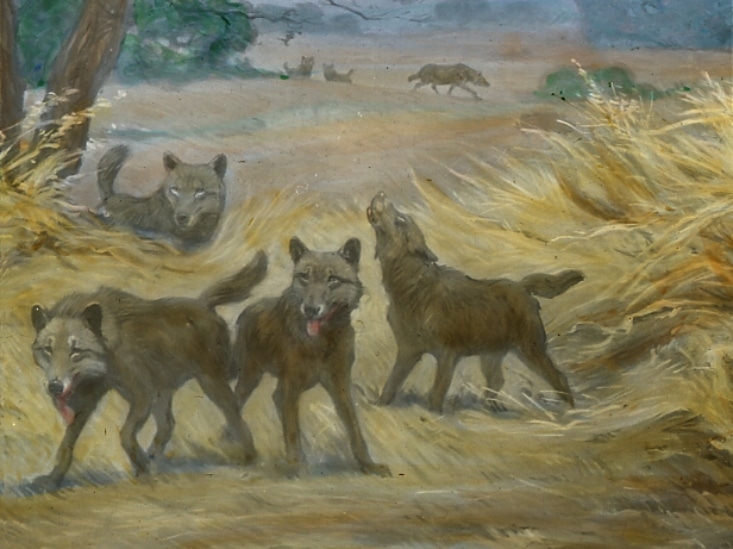Colossal Biosciences recreated an extinct apex predator and has it roaming free on a private ecological preserve owned by the company’s wealthy owner. The company has announced that it used DNA from the Ice Age Era and extinct dire wolf DNA to create a brand-new breed. The announcement was met with excitement by some and fear by others. Many have compared the news to the popular 1990 movie “Jurassic Park,” in which scientists resurrected dinosaurs.
Scientists Ask What Happens Next
“Everybody’s excited about the technology, and rightly so – it’s just amazing what they’ve done,” said Dave Strayer, a senior scientist emeritus at the Cary Institute for Ecosystem Studies in New York. “But unless they’re only talking about raising these animals to be kept in a zoo or private collections, they’re going to be releasing them into the wild – and what happens then?”
Why Bring Back the Dire Wolf?
Experts in the field told USA Today that bringing back extinct animals like the dire wolf results in hybrid animals that are genetically different from their predecessors. The animals are created by engineering DNA that matches up with the extinct species’ important traits into a modern DNA sequence.
Colossal Biosciences created its version of the dire wolf by using DNA from grey wolves with handpicked genes from the dire wolf DNA. This combination produced key features of the extinct species, but not a replica of the dire wolf.
Dire Wolves Kept on a Preserve
Conservationists and ethicists are divided on whether the extinct species should be returned. Colossal says it does not plan to release the dire wolf into the wild. The company’s chief Science Officer, Beth Shapiro, says the dire wolves are being kept at an undisclosed location.
The area the dire wolves are calling home is a 2,000-acre ecological preserve. Reportedly, Colossal is also working on projects to genetically engineer hybrid versions of the Dodo bird, Tasmanian tiger, and woolly mammoth to release the species back into the wild.
Experts Divided on Dire Wolf
Conservationists are divided on what could occur if the hybrid species are released into the wild. Some believe that some of the species could be released into their natural habitat and that their presence would restore the ecosystems. Others feel that releasing the animals into the wild simply because it is “cool” could do more harm than good.
“We do a lot of things because they’re cool. Coolness is underrated as a reason to do things in academic discussions,” Greely said. “It would be really cool to see a woolly mammoth, and it would be really cool to see a giant ground sloth, and that’s worth something.”
Impact On Ecosystems
Revive and Restore scientist Ben Novak argues that the extinction of some species hurts other animals in their ecosystem through a domino effect directly related to habitats as well as the species’ food chain. The company is currently working on trying to revive the numbers of the black-footed ferret and passenger pigeons.
According to a report in 2018 by the World Wildlife Foundation, humans have caused 60% of birds, fish, mammals, and reptiles to be eradicated. Cautiously reintroducing both extinct and threatened species could revive many ecosystems, Novak said. He also believes the hybrids would protect other animals in their ecosystem.
Hybrids Could Harm Ecosystem
Many scientists worry that the new animals will not act the way that their ancestors did when placed in their natural environments. Instead of helping the ecosystem, the changed behaviors could have the same results as letting an invasive species loose in the ecosystem.
“We have centuries of history of deciding a species has a desirable attribute, deciding we know what will happen when we introduce it into a new place, and then discovering we were wrong,” Strayer said. “What will we do if they don’t behave as we hope?” he said. “Who decides if they even should be released into the wild? What kind of plan is in place to deal with unintended consequences? And who pays for it?”








